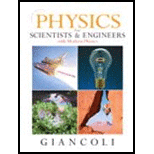
What type of bond would you expect for (a) the N2 molecule, (b) the HCl molecule, (c) Fe atoms in a solid?
(a)
Find the type of bond present in N2 molecule.
Answer to Problem 1Q
The type of bond present in N2 molecule is covalent.
Explanation of Solution
The nitrogen molecule is diatomic molecule and has five valence electrons so it needs three more valence electron to complete its octet.
Thus the nitrogen molecule will share its three electron with another nitrogen to form octet so the bonding in nitrogen molecule is covalent.
(b)
Find the type of bond present in HCl molecule.
Answer to Problem 1Q
The type of bond present in HCl molecule is ionic.
Explanation of Solution
The HCl molecule is diatomic molecule and when it is bubbled into water it ionizes completely as hydrogen ion and chlorine ion.
Even in the gases state of HCl, chlorine is partially negative and hydrogen is partially positive thus the bond in the HCl is ionic.
(c)
Find the type of bond present in Fe atom in solid.
Answer to Problem 1Q
The type of bond present in Fe atom in solid is metallic.
Explanation of Solution
The Fe atom are metal and when it present in the solid state form they form metallic bond with another metal atoms.
Thus the bonding in Fe atom in metal is metallic.
Want to see more full solutions like this?
Chapter 40 Solutions
Physics for Scientists and Engineers with Modern Physics
Additional Science Textbook Solutions
University Physics Volume 2
An Introduction to Thermal Physics
Glencoe Physical Science 2012 Student Edition (Glencoe Science) (McGraw-Hill Education)
Conceptual Physics (12th Edition)
Essential University Physics: Volume 2 (3rd Edition)
Physics: Principles with Applications
- QUESTION 3 The solid phase of an element follows van-der Waals bonding with inter-atomic potential:arrow_forwardThe bond length in the BrF molecule is 178 pm and the measured dipole moment is 1.29 D (debyes). What is the magnitude of the negative charge (in units of the electronic charge e) on F in BrF? (1 debye = 3.34 × 10−30 coulomb-meters; electronic charge = e = 1.6 × 10−19 coulombs). A. 0.15 B. 0.24 C. 0.33 D. 1.00 E. 1.6 × 10−19arrow_forwardThe atomic radii of a divalent cation and a monovalent anion are 0.074 nm and 0.128 nm, respectively. Calculate the force of attraction between these two ions at their equilibrium interionic separation (i.e., when the ions just touch one another) and the force of repulsion at the same distance.arrow_forward
- 11. a) Determine which planes in an fcc structure have the highest density of atoms. b) Evaluate this density in atoms/cm² for Cu. 12. Repeat Problem 11 for Fe, which has a bcc structure. 13. Show that the maximum packing ratio in the diamond structure is n/3/16. [Hint: The structure may be viewed as two interpenetrating fcc lattices, arranged such that each atom is surrounded by four other atoms, forming a regular tetrahedron.]arrow_forwardThe energy between a pair of atoms with respect to their distance r can be described by the Lennard-Jones potential: VLJ(r) = 4ɛ 12 [9¹-9] r 6 e a) For € = 0.5 eV, and σ= 0.2 nm, calculate the bond length [Hint: The math is much easier if you keep the units as eV and nm]. b) Show that the bond energy is equal to epsilon.arrow_forward(i) State and briefly explain the gross selection rule required for a molecule to give a pure rotational spectrum. What is the physical origin of the specific selection rule ΔJ = ±1? (ii) Explain how the bond length of a diatomic molecule may be determined from the measured spacing between the lines observed in its microwave spectrumarrow_forward
- The internuclear distance (bond length) of carbon monoxide molecule is 1.13 Å. Calculate the energy (in joules and eV) of this molecule in the first excited rotational level. Also calculate the angular velocity of the molecule. Given atomic masses of 12^C = 1.99x10^-26 kg; 16^O = 2.66x10^-26 kg.arrow_forwardIf the bonding energy, in terms of (r), between two ions is ( number. a) Find the repulsive and attractive forces between the two ions. b) If the bonding energy between the two ions at the equilibrium state is given as ny r+1), x and y are constant and n is an integer Find the smallest distance between the two ions to achieve the state of equilibrium. (x1-n \ny, 1-narrow_forwardThe CO molecule has a dipole moment of 0.480x10-30 C m. Given that its equilibrium bond distance is 212 pm, what is the magnitude of the effective charge that causes this dipole moment? Give your answer in units of the charge of an electronarrow_forward
- Given that the spacing of lines in the microwave spectrum of 35C1¹⁹F, which may be considered as a rigid rotator, is constant at 1.033 cm¹, calculate the following properties of the molecule: b. The bond length. a. The moment of inertia [Note: m(³5Cl) = 34.9688 u, m(¹⁹F) = 18.9984 u.]arrow_forwardCalculate the vibrational frequency of the HF molecule. Assume the bond length is 0.92 Å.arrow_forwardCalculate the y-component of the center of mass of the following molecule. Answer in Angstroms (Å), a distance unit. The atomic mass unit is u. (Note: the atoms used here might not exist in nature.) • e = 1.3 Å %3D • m = 5 u • M = 14 u • e = 98° %3D m Ө/2 Ө/2arrow_forward
 Modern PhysicsPhysicsISBN:9781111794378Author:Raymond A. Serway, Clement J. Moses, Curt A. MoyerPublisher:Cengage Learning
Modern PhysicsPhysicsISBN:9781111794378Author:Raymond A. Serway, Clement J. Moses, Curt A. MoyerPublisher:Cengage Learning
